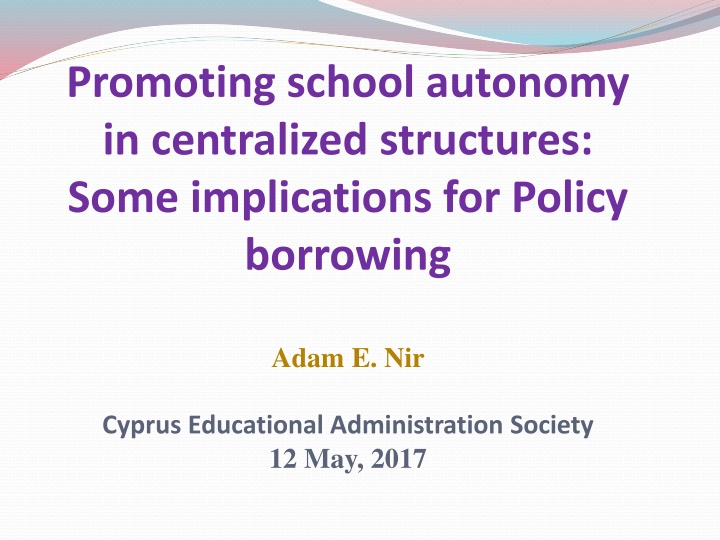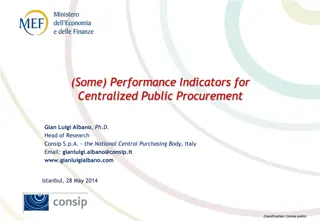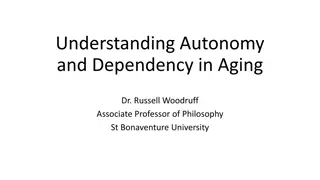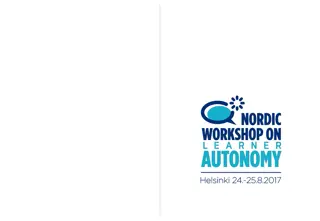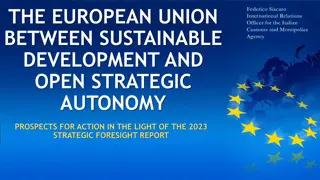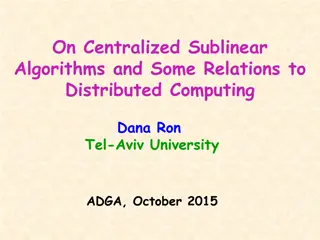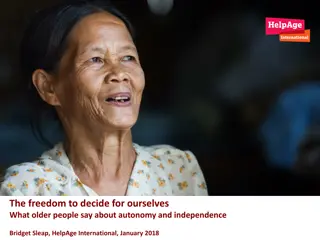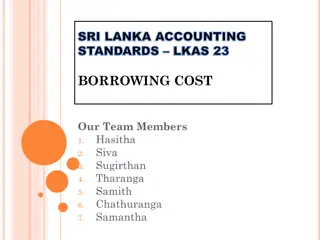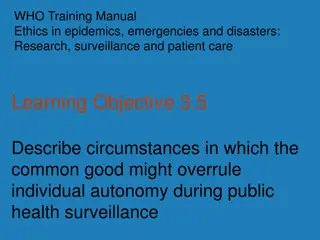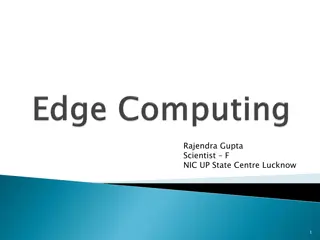Promoting School Autonomy in Centralized Structures: Implications for Policy Borrowing
Centralized educational structures face implications when promoting school autonomy. Policy borrowing highlights the need for change, initiation of educational policies, and international differences in implementation. The benefits and costs of buying in a shop versus going to a tailor parallel the concept of policy borrowing, which involves seeking effective practices from international experiences for better outcomes.
Download Presentation

Please find below an Image/Link to download the presentation.
The content on the website is provided AS IS for your information and personal use only. It may not be sold, licensed, or shared on other websites without obtaining consent from the author.If you encounter any issues during the download, it is possible that the publisher has removed the file from their server.
You are allowed to download the files provided on this website for personal or commercial use, subject to the condition that they are used lawfully. All files are the property of their respective owners.
The content on the website is provided AS IS for your information and personal use only. It may not be sold, licensed, or shared on other websites without obtaining consent from the author.
E N D
Presentation Transcript
Promoting school autonomy in centralized structures: Some implications for Policy borrowing Adam E. Nir Cyprus Educational Administration Society 12 May, 2017
1. The need for change; 2. The initiation of Educational change policies often takes place in a context of large-scale criticism on schools; 3. Large scale change initiatives are usually not accompanied by substantial financial commitment; 4. public schooling is often treated as market commodity; 5. Emphasis on standards, indicators, accountability and testing;
Similar policy themes may be found internationally as different countries seem to be doing similar things. However, educational policies implemented by different countries are not as similar as initially appears. Context matters!!
Buying in a shop - benefits: * Quicker * Cheaper * Easier to get
Buying in a shop - costs: * Not necessarily the right color or material; * Measures and fit are reasonable but not perfect; * Not unique; * Requires some compromise;
Going to the tailor - costs: * It takes more time; * It is more expensive; * The process is more complicated and difficult;
Going to the tailor - benefits: * You are more likely to get what you paid for; * It will fit you perfectly; * It is more likely to be unique
What is policy borrowing? A policy borrowing approach searches the international experience for examples of a unique, transferable best practice .
1. They were found effective and successful in other contexts; 2. They Save time; 3. They Save money; 4. They enable better clarity regarding their final result.
Cross national attraction: Internal dissatisfaction Systematic failure Political change Economic change Global tendencies
Decision: the decision to adopt a certain policy may follow various rationales: theoretical rationale practical rationale phony rationale quick-fix decisions rationale
Implementation Degree of implementation will depend on: The compatibility of measures a particular borrowed policy offers to the contextual circumstances and features of the borrowing system; The scope of the proposed change
Internalization the process through which a policy becomes part of the educational system of the borrowing country.
Potential discrepancies: Structural Political Ideological Norms and values History and habits Economic Legal Professional
School autonomy is assumed to improve school effectiveness and relevancy This assumption is supported by a vast number of empirical findings Consequently, many educational systems around the world introduced school autonomy policies
The centralized bureaucratic control of the Israeli educational system. Minister of Education Director General Haifa District Northern District Central District Tel Aviv District Jerusalem District Jerusalem Education Admin. Southern District Ultra Orthodox District Elementary, middle, and high schools
School-Based Management (SBM) in the Israeli educational system 1996-2004: SBM is centrally implemented; Since 2004: random implementation with little involvement of the central office; In 2010: reenactment of the SBM policy.
Method18 A nationwide study sponsored by the Israeli Ministry of Education. Sample: 2,565 teachers from 153 elementary schools coming from six districts; The research group: 44 schools involved with SBM at least three years; The comparison group: 109 schools that introduced SBM during the academic year in which the study was conducted;
Method (continued) 19 Research tool: a 24 items questionnaire originally developed by Friedman, Brama & Toren (2001) containing six distinctfactors: organizational vision, feedback-based management, managerial emphasis, student participation, financial autonomy and teacher authority. Alpha coefficient of each subset ranged between 0.66 and 0.90, and for the entire scale = .87. Students' scores were obtained from the Ministry of Education.
Research group N=44 Comparison group N=109 F Variable Vision 3.39 .24 3.08 .24 2.70 .38 1.80 .25 2.94 .48 2.44 .40 3.31 .31 3.13 .27 2.60 .36 1.92 .26 2.95 .44 2.21 .35 2.23 Managerial emphasis .88 2.17 Feedback-based management Teacher authority 6.70** Student participation .00 Financial autonomy 12.44** **P<.001
Predictor Canonical Discriminant function Wilk s Financial autonomy .70 .92** Teacher authority -.35 .95* Vision .29 .98 Feedback-based management .26 .98 Managerial emphasis -.18 .99 Student participation .06 1.0 * P<.05; **p<.001; Eigenvalue=.168; Wilk s =.85: R =23.17; df=3.15; p<.01; Group Centroids: research group= .64; comparison group = -.25
df Comparison group T Research group Math 72.01 (18.81) 62.74 (25.05) 57 1.59 (n.s). Hebrew 68.94 (16.82) 66.74 (13.68) 59 .56 (n.s.) Sciences 79.65 (20.83) 72.31 (21.06) 57 1.34 (n.s.) English 60.12 (25.71) 59.75 (18.17) 58 .07 (n.s.)
Conclusions 23 The implementation of school autonomy policies in centralized structures is subjected to the Centralization trap .
Conclusions 23 Policy borrowing is context dependent. Expectations regarding effects should be adjusted according to the unique features of each educational system.
Thank you adam.nir@mail.huji.ac.il
